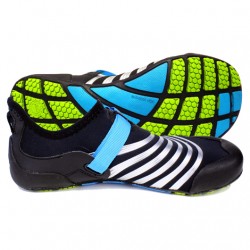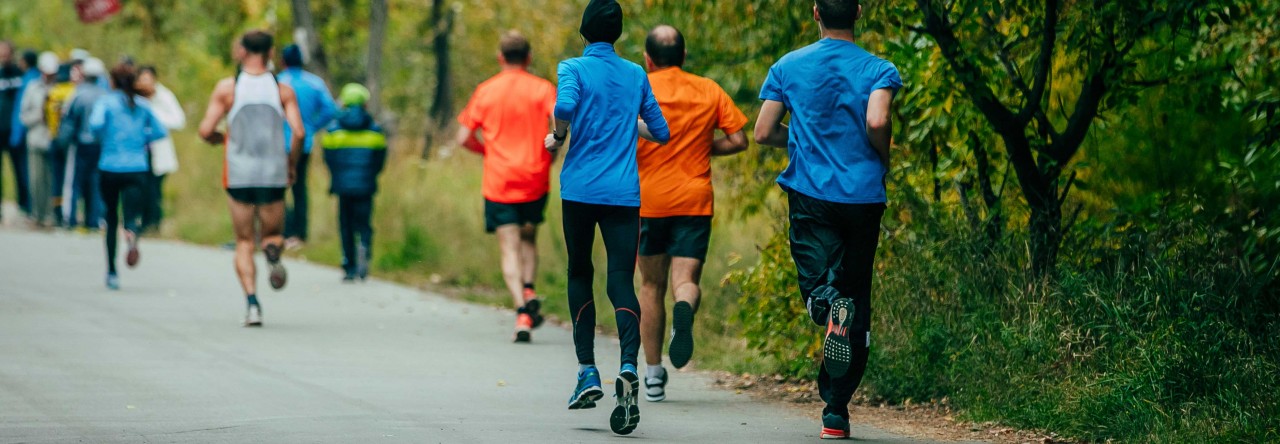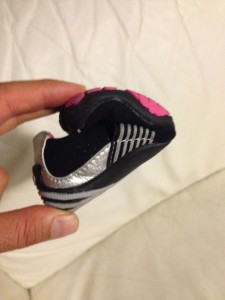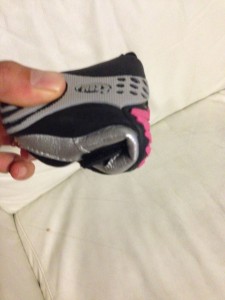Was at a shoe store to buy a pair of shoes for my little daughter who is 2 years old. Searched the range of products at the shop and unfortunately could not find what I had on mind. I tried every shoe by bending and twisting them to see how flexible they were, unbelievably none were. I asked the shop keepers for zero drop shoes and they had no idea what I was talking about. All the shoes had a thick and inflexible sole, and an elevated heel to provide “support” for kids’ feet. That is what the proud owner of the shop enlightened me with.
Those who know me in person or have read my earlier blog posts should probably know how much I appreciate the idea of minimalism at running. A big chunk of the fuss about minimalism is due to the negative impact of our modern lifestyle to our posture. The support from shoes tend to provide comfort, which means it does the job or a portion of the job of some parts in our feet to take the pressure off them. Therefore those parts become weaker and lose their coordination to act properly at walking or running or even standing, because their jobs are taken over by shoes.
It is very common to feel pain at knee, shin or ankle shortly after running in a new pair of shoes. Such pains are due to the adaptation of our lower leg soft tissues (muscles, tendons, whatsoever) to the new condition. They naturally want to take their designated action at a phase of running but their job is already taken so they conflict with the shoes, but our body is smart enough to adapt, so those parts would stop their behaviour or lessen the force exerted behind the actions by a new wiring developed in the brain to turn such movements off or be replaced by some others and that is it: we deviate from natural movement of our body parts to serve a purpose, which is either comfort or speed (cannot think of more, can you?).
I wonder if mobility scooters were cheaper than shoes, how many of those runners in highly supportive shoes would buy one?!
Joking apart, have you ever seen athletes who proudly say that they have manged to skip working out some muscles in their body?! I have, shod runners with cushioning, arch support and elevated heel in their shoes do it all the time. They skip strengthening their feet, you know why? because it is bloody hard! it takes time to work out those tiny creatures down under your legs but it is possible and comes with great benefits. It is like building the foundation of a house, is not it the most important very first step?!
What I am trying to conclude here is there is a cycle of wrong unnatural doing, mainly driven by the [growing] tendency for [more] comfort, and is enforced to the world of the little ones too. A kid is so light and fast growing compared to an adult. Let them develop by their nature and grow stronger feet. They can manage because their proportion of strength to body size is much more than that of a typical adult. Have not you seen little kids who can hang off a bar one-handed?! I cannot do it for longer than a second but my daughter can for an impressively longer time. It is very simple, her body is too light for her hands until she grows up so that the balance of strength would be about to tip. If she keeps practicing she would likely be able to maintain that proportion for longer or maybe even a life time but probably the modern lifestyle would stop her at some point. That does not mean we are allowed to weaken our kids’ feet, make them be demanding support for the most natural sport just because we, as their parents, have gone on such a path. It does make no sense to me at all.
So we went online and found these ones at Zemgear, kids love them and my wife and I are so happy about it. Go strong kids, never follow suit blindfolded. 





 All the fuss at Progressive Running is in fact about the potential limits you have, based on your overall form. Improve your form to eventually make sky your limit and it starts from subtle changes to major ones. You may not know how far you can go with your current form, maybe 100km! who knows, but am sure you could definitely do better if you improved your form.
All the fuss at Progressive Running is in fact about the potential limits you have, based on your overall form. Improve your form to eventually make sky your limit and it starts from subtle changes to major ones. You may not know how far you can go with your current form, maybe 100km! who knows, but am sure you could definitely do better if you improved your form.
